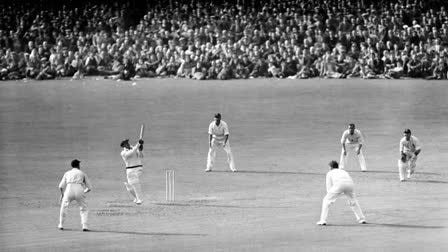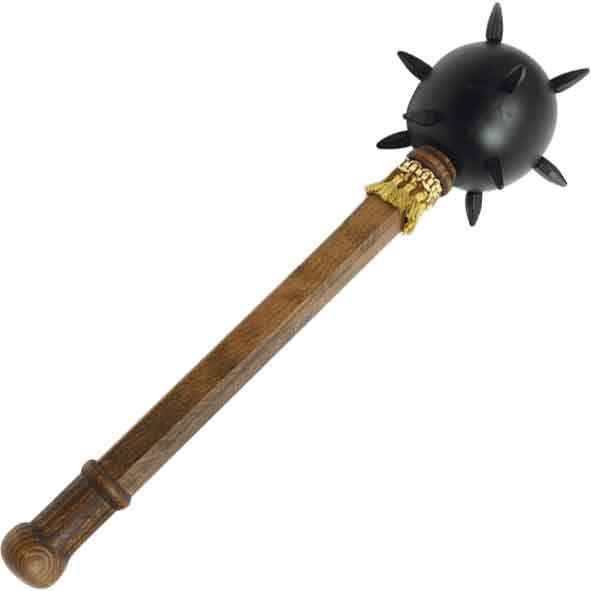The Absurd, The Bad, and The Funny: WTC Final, Day Two
What even is a Mace? How do you define Intent? Why don’t the slips simply stand closer? Recapping the funniest and most absurd moments from Day Two of the WTC Final.
At one point during play, as the topic of fitness and athleticism in cricket came up, the director, with pitch-perfect timing, panned to Merv “52 beers on a flight” Hughes sitting in the crowd. “Even the big gronk, big Merv Hughes…he was a wonderful athlete.”
Michael Atherton said that.
Just kidding, it was obviously Haydos.
If you’re not Australian, it’s probably worth Googling “gronk.” I’ll wait. All caught up? Welcome back to the absurd, the bad, and the funny from Day Two of the WTC final.
But What Does This Mean For My Team?
As all the empty seats in a nominally sold-out crowd indicate (presumably purchased by Indian fans anticipating their team making the final, then discarded when they didn’t), many fans are watching along at home, wondering what this all means for their team.
In that spirit, I thought the best part of Day Two of the WTC final was that, with the game motoring along like Kagiso Rabada on a night out, New Zealand’s prestigious record of being the only team to win a six-day Test this millennium (since Pakistan in 1982, actually) looks set to remain intact. So, take that. 14 wickets fell on day one, 14 wickets fell on day two, but rest assured, 14 wickets will not fall on day three. Mathematically, they couldn’t. I shouldn’t have to explain that.
Pictured: A still from a Timeless Test.
On the other hand, the worst part was watching so many preening English, Indian, and Australian fans be proven right: the South Africans really don’t know how to bat. Keshav Maharaj seemed quite confused about the run-out law (your bat needs to be behind the popping crease before the bails are dislodged, Keshav), while Verreyne also had some difficulties parsing the handled ball law. More on that later. Allegedly, Tristan Stubbs has also been playing in this match. While it’s the hope that kills you that this Test may still produce a thrilling (Day Three) finish, realistically, after watching that display, Australia already has about 217 too many.
The second worst part was mentally weighing up who has done more insidious, lasting damage to the world out of Elon Musk (RSA) and Rupert Murdoch (AUS). It’s Murdoch, but only because he’s had such a head start. Now, wouldn’t that make for a satisfying cage fight?
Also, if your team is playing in this game, have you considered that perhaps they shouldn’t be? Worth reflecting on.
What Are The Teams Playing For?
Because they’re being paid to! (I’m so, so sorry.)
Yesterday, for the stragglers among the cricketing community, we reviewed what the WTC is and isn’t, and how both teams qualified for this final (tl;dr through a heady combination of winning and not losing).
Quick, pop quiz. In this context, WTC stands for:
World Trade Centre
World Test Championship
Wu-Tang Clan
Working Tax Credit
What The Crap?
Western Texas College
Tune back in tomorrow for the answer.
In the meantime, though, let’s build on our education by examining what the teams are playing for in this so-called “WTC” final.
Pictured: A medieval mace, the weapon after which we decided to name the most prestigious trophy in Test cricket.
As with many things in cricket, we’re paying homage to oblique, nebulous historical traditions, with obscure ties to British royalty and aristocracy thrown in for good measure. The WTC winner is presented with the prestigious[citation?] ICC Test Championship Mace, designed by Thomas Lyte, the gold and silversmiths for the UK Royal Family. For some condescending reason, despite only nine teams contesting the WTC, on the mace itself, “the world is surrounded by a central belt of gold engraved with the insignia of all 12 competing Test nations.” I guess that’s as close as you’re ever getting to the mace, Ireland, Zimbabwe, or Afghanistan. Sorry, guys.
If you’re unfamiliar with maces—and why wouldn’t you be?—they “gained significant popularity during the medieval period, especially from the 12th to the 16th centuries, as a weapon effective against armour.” Cool. Up with the times, as always, ICC.
While you unfortunately can’t skull 20 beers out of a mace in celebration, unlike a proper trophy (so what’s even the point of winning?), you probably could do a line or two off the handle, and that’s nearly as good, hey Kagiso?
Pictured: The Bledisloe Cup. Now there’s a trophy you can skull several cartons of beer out of in celebration.
Actually, the more I think about it, the more my only gripe is that we don’t have more trophies named after medieval weaponry. I want to see Australia and India play for the Laxman-Langer Lance, England and South Africa for the Broad-Bavuma Bludgeon, and New Zealand and Sri Lanka for the Fleming-Fernando Flail and PRONTO.
Intent! Huh! Good God, Y’all. What Is It Good For?
After ball one, KP came out with this gem on commentary: “I suppose the last half hour of play, you can understand what Bavuma was doing, just trying to get to the end of play, to think he could start and go again today. But here is today.” Here is today. It sure is, mate, it sure is.
Still, with Today finally Here, it was clear that South Africa had recalibrated their approach overnight. It wasn’t quite full-fledged Bavuma-Ball, though the skipper did show significantly more Intent®™, managing to score more runs from one lofted cover drive than he did in 37 balls last night.
Accordingly, with South Africa adopting the novel tactic of trying to score runs, discussions in the commentary box turned to Intent®™, as they inevitably do. It led to this gem from Hashim Amla, trying to define what Intent®™ meant to him: “It’s maybe leaving with a bit more intent…uhh…purpose.” Reasonable effort, Hash, but don’t apply to work for the dictionary any time soon.
Speaking of Intent®™, we saw plenty when Hazlegod Celebr-appealed and Bavuma was given out LBW. Holy compound word, Batman! After a notable delay, Bavuma reviewed the decision. This led to my favourite moment of the day, as we saw Third Umpire Richard Kettleborough raise his finger after seeing the first replay, before visibly shrugging as additional replays showed Bavuma had edged it, all while rolling through the Standard Third Umpire Script that we know and love. “Rock and roll that for me, please?”
Naturally, this led to some good, old-fashioned “you always know when you hit it” discourse from Ian Smith on commentary, as though that’s an immutable law of the universe. His primary evidence was that Bavuma delayed in reviewing the decision. I get it, but no, as technology has repeatedly proven by now, you always know when you know that you’ve hit it. It’s also possible to hit the ball and not realise—it tends to be moving pretty fast, after all.
“If a batter edges the ball in the middle of the woods and no one’s around to hear it, does he really know if he hit it?” I’m certain Athers said that one.
Commentary Corner
Elsewhere on commentary, we got perhaps the clearest ever articulation of KP's underlying life philosophy: “...when [Nasser and Dinesh Karthik] talked about it, I couldn’t understand what they were saying, because it was completely different to the way I played here at Lord’s.” To which Graeme Smith added: “You weren’t a deep thinker, though.” To his credit, KP was then silent for the longest he ever has been: “...I’m thinking.”
I could give you the full context, but would it really change anything? There are several ways to skin a cat, Kevin. Other people even have interior lives, too.
I also picked up this gem:
Graeme Smith on Jacques Kallis: “The man could stare at a wall for four hours.” That got a hearty laugh from the back of the commentary box. Sounds like he was speaking from experience. “I hope he is [watching].”
It was at approximately that point that I fell asleep….err…stayed up to watch every ball of play, but I hope Smith and KP’s double act continued.
Spirit of Cricket Discourse
It was a bumper day for Spirit of Cricket discourse—the sport’s most punishing conversation topic. If cricket does have a Spirit, they’re more Casper than Bloody Mary, anyway, but more likely again, it’s probably just an old, white dude in an MCC vest sipping a G&T.
Pictured: The Spirit of Cricket, Est. 2022.
It all started when Verreyne forgot what sport he was playing and decided to pick up the ball after it had lodged in his pads following an inside edge. Carey was (sheepishly, after last time) attempting to catch the ball, which Verreyne plopped onto the ground, before Khawaja appealed. You’ll find plenty of serious analyses of this moment and whether the relevant laws were applied correctly elsewhere, but really, cricket’s pretty simple as I learned it: the batter hits the ball with his bat (the clue is in the name) and the fielders are allowed to pick it up and touch it. Don’t stray from this formula, and there won’t be an issue. Nevertheless, it’s rarely a dull moment when Carey and Khawaja are involved at Lord’s.
From there, South Africa realised that playing cricket wasn’t working for them anyway, so they may as well stick to their strengths and try rugby instead. That led to Kyle Verreyne doing his best Siya Kolisi impression and tackling Pat Cummins mid-pitch, but Captain Pat had the last laugh when Verreyne was given out LBW on review. A few overs later, Maharaj continued the tactic, “tripping” over Carey after scampering through for a single. Put in the long spikes, lads!
On his way to besting Rabada’s 51/5 with his own 28/6, Pat Cummins also hit KG Rabada in the helmet twice in a row. Do you think he felt any sort of way about Jimmy Anderson saying Rabada was better than him?
Ngice of you to show up, Ngidi
Yesterday, South Africa adopted the risky tactic of selecting a man who had either never played cricket before in his life, or, at the most generous reading, had utterly forgotten how to. Based on Lungi Ngidi’s first-class bowling average of 23, we have no choice but to assume he must have known how to play cricket at some point, so it can only be the latter.
Ngidi was a full two runs an over more expensive than the next most costly bowler on Day One (5.62 vs 3.5 for Jansen). It looked like he was bowling on a different pitch to everyone else, in the worst possible way. It isn’t the first time teams have adopted this sort of strategy—Zak Crawley exists, after all, to say nothing of the Mike Brearley’s of the world a generation ago—but it was certainly an unorthodox decision.
Today, though, we saw the version of Ngidi who averages 17 in home Tests rather than the one who had taken seven first-class wickets since the start of 2023, as he blasted through Australia’s two best batters from the first innings, plus their captain, to dismiss Smith, Webster, and Cummins in the space of six overs. Ngice of you to show up, Ngidi, better late than never. Maybe he was confused by the Test being scheduled for six days?
To maintain cosmic balance, the Australian batters duly forgot how to play cricket instead.
Also, the Australian commentators had a good time mangling Ngidi’s name, like the hatchet job they’ve done to Labu-shane over the years. “En-Giddy.” Fantastic. That “Ng” sound can get real dangerous, real fast if you don’t have your head on your shoulders…
Pictured: Back to school, guys.
Just Stand Closer
Quite a few edges fell short of the slip cordon today. Now, I’m no fancy big city lawyer, but have they considered standing closer? Food for thought.
The Review Review
South Africa's reviews on Day One were comically bad, and someone has to hold these guys accountable. So, who reviews the reviewers? It turns out, I do.
27.3 overs, Hazlewood to Bavuma, South Africa review: Though he didn’t appear to know it, this was a fantastic review by Bavuma as he turned out to get an inside edge. 9/10—one point deducted for dumb luck.
51.3 overs, Cummins to Verreyne, Australia review: Great judgement from Cummins to realise this ball was going on to hit leg stump, despite tripping over Verreyne mid-pitch and presumably throwing off his calibrations. I suspect you could hang Cummins upside down from the ceiling like a bat, and he’d still have a sixth sense if the ball was hitting leg. 10/10.
5.3 overs, Jansen to Khawaja, South Africa review: South Africa thought Khawaja might have gotten a faint edge behind on a pull shot. He did not. There was daylight between bat and ball, as the parlance goes. Better than reviewing one that hit the middle of the bat, but only marginally. 1/10.
18.5 overs, Ngidi to Smith, South Africa review: To be honest, I’m not entirely sure why this wasn’t given out live. Maybe to make South Africa sweat and squirm while weighing up whether to review it? In the end, it was plumb with three reds. 10/10.
22.6 overs, Ngidi to Webster, Australia review: This was more or less identical to the LBW where Webster was given not out yesterday and South Africa failed to review. This time, the umpire got it right, and Webster reviewed in desperation. 3/10 for déjà vu.
24.1 overs, Ngidi to Carey, South Africa review: Carey skipped down the pitch, missed the ball and was given not out. South Africa decided to review, but Carey was so far down the pitch that it was comfortably going over the stumps. Not the worst review I’ve ever seen (that was yesterday), but not a good one, either. 4/10.
33.1 overs, Jansen to Carey, Australia review: I thought this one looked out live, but, on review, Carey smashed it. This is exactly what the DRS was invented for—I don’t even have a snide comment to add. 10/10.
38.2 overs, Rabada to Carey, Australia review: A review more out of desperation than expectation. With Carey the last recognised batter and Australia still having reviews in hand, he had to roll the dice. It turned out the ball was only clipping the leg stump (Umpire’s Call), so it was worth a shot. 6/10.
Stray Observations
When Travis Head was dismissed, Australia found themselves 66/6. Coincidence? Unlikely. Are the Australian cricket team closeted Satan worshippers? Impossible to say, but equally, damningly, impossible to rule out.
Pictured: Australia after winning the last WTC final, potentially engaging in an unverified satanic ritual.
Rabada dismissed the same two batters (Khawaja and Green) in the same over twice in a match. The gauntlet has been laid down: Cummins is now obliged to do the same to Verreyne and Jansen.
Aside from deliberately attempting to run himself out in homage to Alan Donald, does anyone know what Maharaj was thinking with that dismissal?
Yesterday, Australia lost 20/5 in 35 balls post-Tea. Today, not to be upstaged, South Africa lost 12/5 in 35 balls post-Tea. What are they giving them for Tea? Did someone swap out K.G.’s sugar packets?
South Africa has now bowled 19 no-balls in this Test. The most in a Test is 102 between the West Indies and Pakistan in 1977, so that’s not under any threat, but 19 is still a lot—let’s hope that isn’t important later on in a tight contest.
With Pat Cummins passing 300 Test wickets, this match now features two of the five bowlers to reach 300 Test wickets in the fewest balls. Does that matter? Not one bit, but now you know, too. Fewest balls to take 300 wickets in Test cricket:
Kagiso Rabada: 11,817
Waqar Younis: 12,602
Dale Steyn: 12,605
Allan Donald: 13,672
Pat Cummins: 13,725









